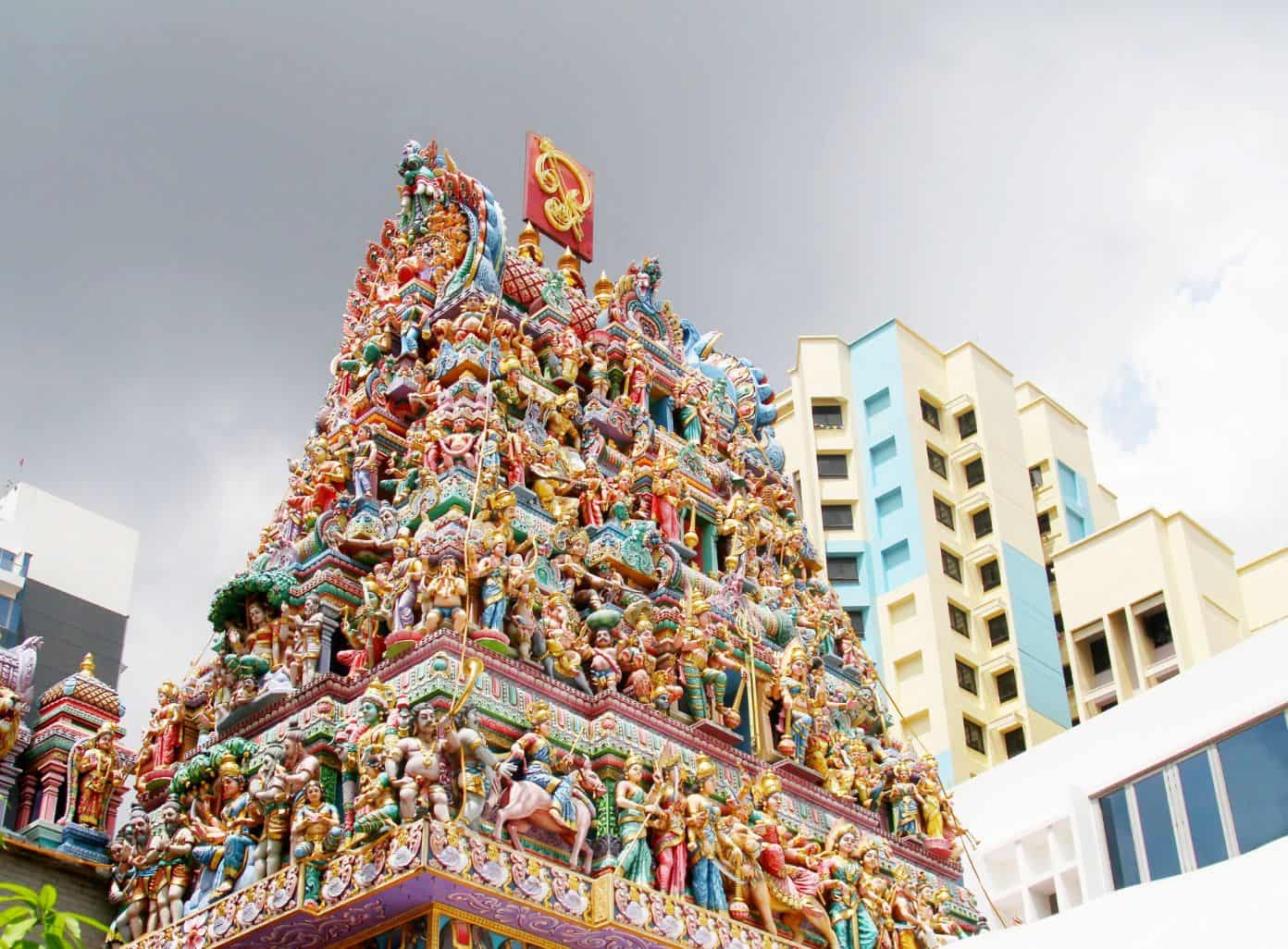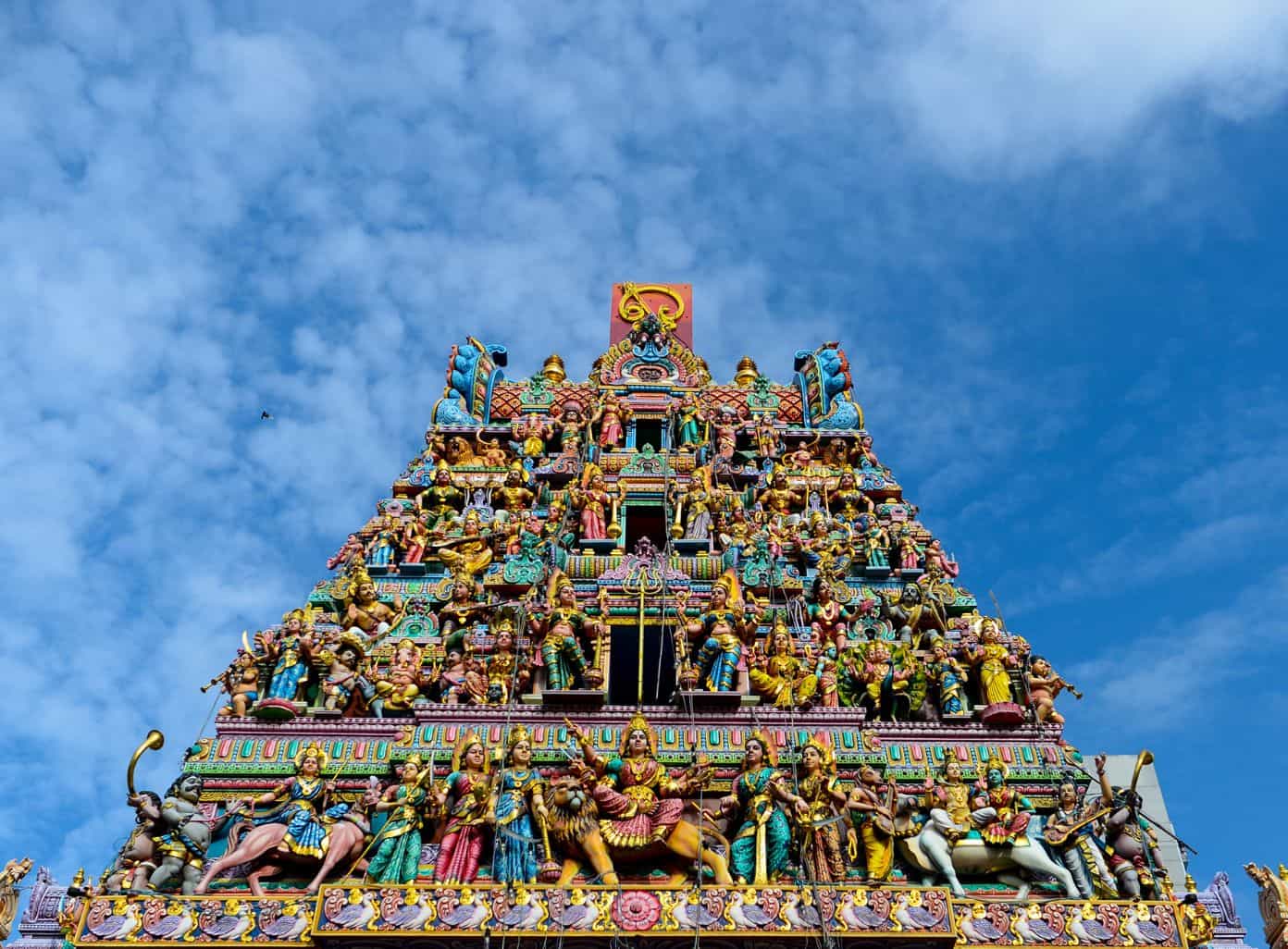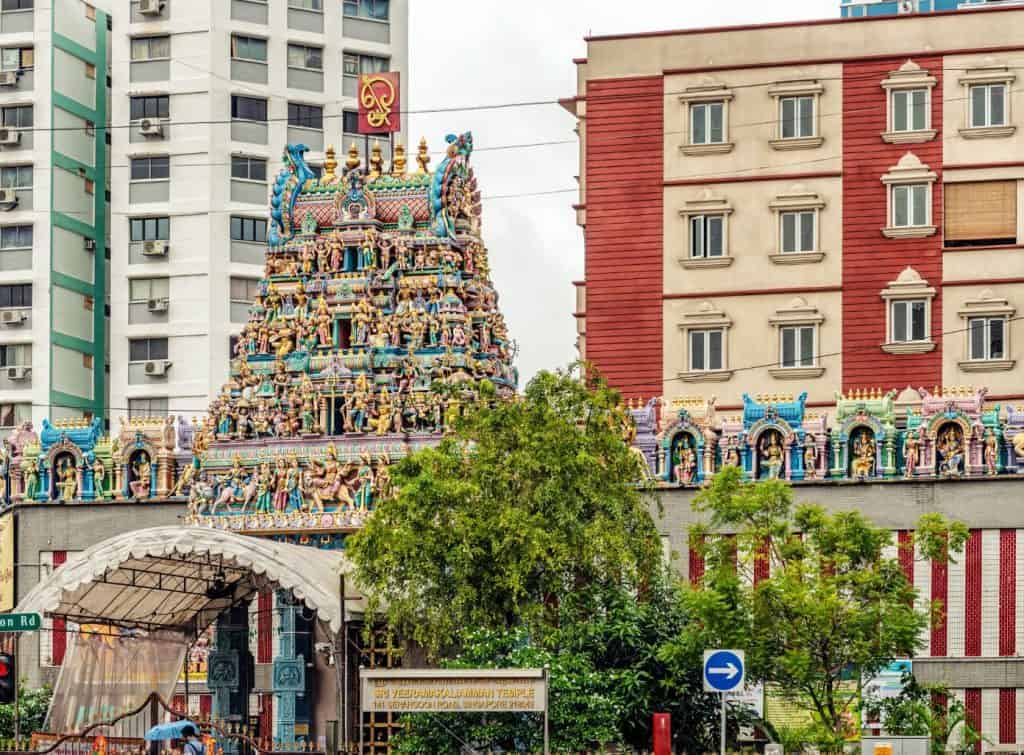Located in Singapore’s Little India, the Sri Veeramakaliamman Temple is a place of great historical and cultural significance. The temple not only houses beautiful architectural marvels but also plays a vital role in the local community and Hinduism as a whole. Let us delve into the fascinating history and discover the deep-rooted significance of this temple.
The Historical Background of the Sri Veeramakaliamman Temple

The Sri Veeramakaliamman Temple has a rich historical background that dates back several centuries. Its origins can be traced back to the early 19th century.
According to historical accounts, the temple’s founding can be attributed to a group of early Indian settlers who arrived in Singapore during the colonial era. Faced with a longing for their homeland and the need for a place to worship, they decided to establish a dedicated space for the worship of Goddess Kali, the fearsome and powerful Hindu goddess of time and destruction.
The Founding of the Temple
The temple’s establishment was no easy task. The early settlers faced numerous challenges, both financial and logistical, in their efforts to create a place of worship. However, their determination prevailed, and in 1881, the foundation stone for the Sri Veeramakaliamman Temple was laid.
Over the years, the temple underwent several renovations and expansions to accommodate the growing number of devotees and to enhance its architectural beauty. Today, the Sri Veeramakaliamman Temple stands as a testament to the resilience and faith of the early Indian settlers.
The Temple in the Colonial Era
During the colonial era, the Sri Veeramakaliamman Temple faced numerous challenges from various quarters. The British colonizers, who held strong influence over the area, often sought to suppress the religious practices of the Indian community. Despite these obstacles, the temple managed to survive and thrive, becoming a symbol of resistance and cultural pride.
Post-Independence Developments
After Singapore gained independence in 1965, the Sri Veeramakaliamman Temple underwent significant developments that further solidified its importance in the local community. The government recognized the historical and cultural significance of the temple and provided support for its preservation and maintenance.
Today, the Sri Veeramakaliamman Temple stands as a vibrant testament to Singapore’s multicultural heritage and serves as a place of worship and community gathering for people of all backgrounds and beliefs.
Architectural Marvels of the Sri Veeramakaliamman Temple

The Temple’s Unique Design
One of the most striking features of the Sri Veeramakaliamman Temple is its unique architectural design. The temple blends different architectural styles, combining traditional South Indian Dravidian temple architecture with elements of North Indian temple design, creating a visually captivating structure.
The temple’s facade showcases intricate sculptures and colorful motifs that depict mythological stories and sacred symbols. The towering gopurams (gatehouse towers) adorned with detailed carvings are a sight to behold.
The Intricate Carvings and Sculptures
The Sri Veeramakaliamman Temple is renowned for its intricate carvings and sculptures. Every surface of the temple is adorned with detailed artwork that tells stories from Hindu mythology.
The intricate carvings on the pillars, walls, and ceilings depict mythological deities, celestial beings, and scenes from ancient epics. These masterpieces of artistry not only add to the temple’s aesthetic appeal but also serve as a source of education and inspiration for devotees and visitors.
The Main Shrine and Other Structures
At the heart of the Sri Veeramakaliamman Temple is the main shrine dedicated to Goddess Kali. Devotees come here to offer prayers and seek blessings from the goddess.
In addition to the main shrine, the temple complex also houses various ancillary structures, such as smaller shrines dedicated to other Hindu deities and a community hall used for religious and cultural gatherings. The tranquil courtyard offers a peaceful space for reflection and meditation.
The Significance of the Sri Veeramakaliamman Temple
The Temple’s Role in the Local Community
The Sri Veeramakaliamman Temple plays a crucial role in the local Indian community, serving as a hub for religious, cultural, and social activities.
Devotees flock to the temple to participate in various religious rituals and ceremonies, seeking divine blessings and guidance. The temple’s priests, known as brahmins, perform daily rituals and lead devotees in the chanting of sacred hymns.
Besides religious activities, the temple also hosts cultural events, such as dance performances, music concerts, and educational workshops, showcasing the rich traditions of Indian culture and fostering a sense of unity among the community.
The Temple as a Cultural Landmark
The Sri Veeramakaliamman Temple is not just a place of worship but also a cultural landmark in Singapore. It serves as a symbol of Singapore’s multicultural society and a testament to the contributions of the Indian community.
The temple is a popular tourist attraction, drawing visitors from all over the world who are eager to explore its stunning architecture and learn about Hindu culture and traditions. It serves as a bridge between different communities, promoting understanding and appreciation of diverse cultures.
The Temple’s Importance in Hinduism
The Sri Veeramakaliamman Temple holds immense significance in Hinduism, particularly for devotees of Goddess Kali. Worshipped as the destroyer of evil and the protector of the righteous, Kali is believed to grant strength and courage to her devotees.
The temple provides a sanctified space for devotees to connect with the divine, seek solace, and find spiritual solace amidst their daily lives. The rituals and festivals celebrated at the Sri Veeramakaliamman Temple help reinforce the devotees’ faith and strengthen their bond with the goddess.
Rituals and Festivals at the Sri Veeramakaliamman Temple
Daily Rituals and Ceremonies
The Sri Veeramakaliamman Temple is a place of daily worship, with elaborate rituals conducted by the temple’s priests. Devotees gather to offer prayers, flowers, and fruits to the deity, seeking her blessings for health, prosperity, and protection from evil.
The rhythmic chanting of sacred mantras, accompanied by the enchanting sounds of musical instruments, fills the air, creating an atmosphere of devotion and spirituality.
Annual Festivals and Celebrations
Throughout the year, the Sri Veeramakaliamman Temple celebrates several major festivals that attract devotees and visitors in large numbers. One of the most significant festivals is the Kumbabishekam, a grand consecration ceremony that takes place once every twelve years.
During the festival of Navaratri, devotees engage in vibrant processions, music, and dance performances, paying homage to the divine feminine energy represented by various Hindu goddesses, including Kali. The temple comes alive with colors, lights, and festivities, creating an atmosphere of joy and celebration.
Special Occasions and Events
In addition to the annual festivals, the Sri Veeramakaliamman Temple also hosts special occasions and events throughout the year. These include religious discourses, community service initiatives, and cultural programs that bring people together and promote the values of compassion, unity, and harmony.
Visiting the Sri Veeramakaliamman Temple during these special occasions allows devotees and visitors to experience the vibrant traditions and customs of Hinduism and witness the temple’s role as a center of religious and cultural life.
In conclusion, the Sri Veeramakaliamman Temple stands as an enduring symbol of Singapore’s multicultural fabric, rich history, and religious diversity. Its historical background, architectural marvels, and deep-rooted significance make it a place that truly merits exploration and appreciation. Whether as a place of worship, a cultural landmark, or an architectural marvel, the Sri Veeramakaliamman Temple continues to capture the hearts and minds of people from all walks of life.








